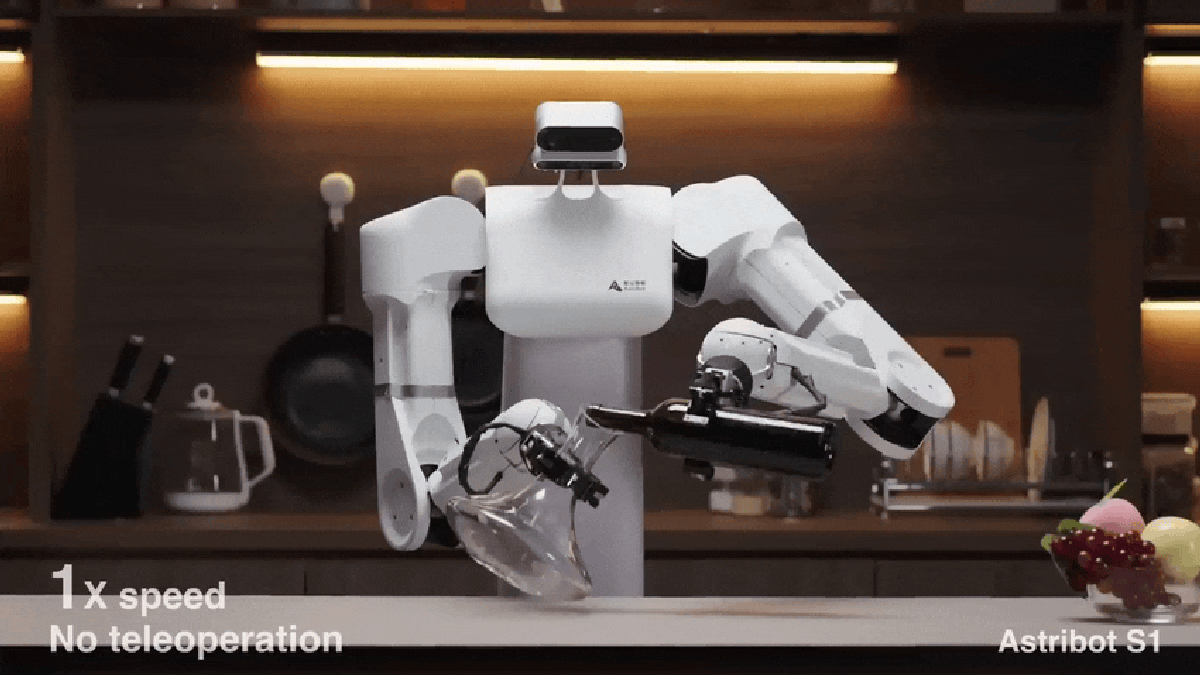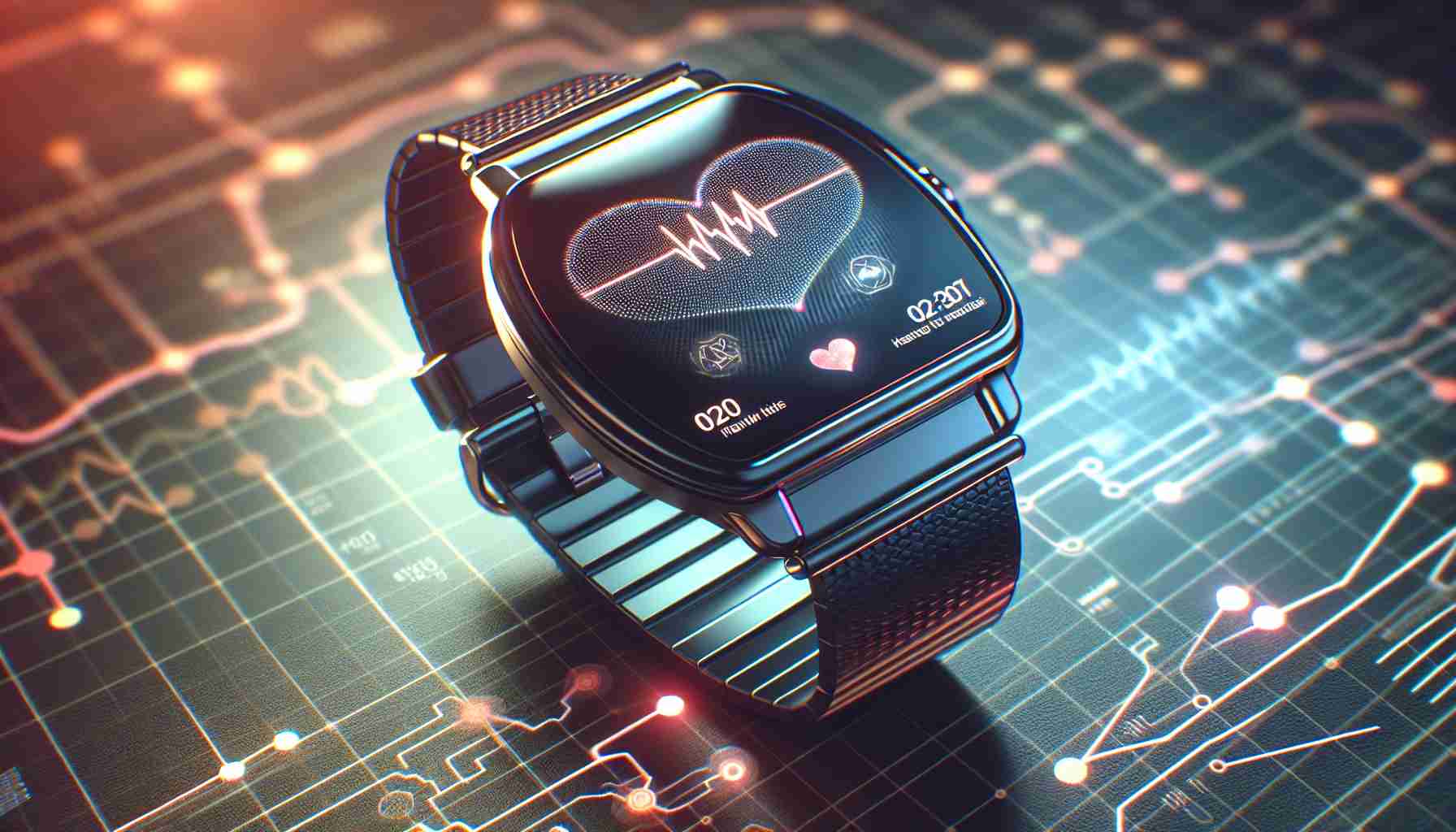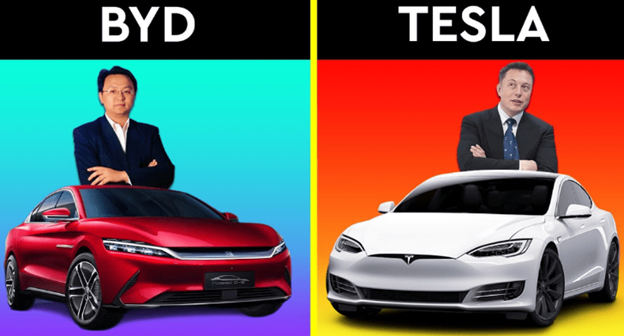- TECHSWU
- Posts
- TECHSWU #28
TECHSWU #28
Welcome to TECHSWU, your go-to destination for all things tech that matter in your daily life! From gadgets to software, we cover it all with a focus on what's relevant and usable now. Tune in to our YouTube channel, daily newsletter, and podcast for the latest updates and insights on the tech you use every day. Stay connected with TECHSWU and stay ahead in the world of technology



Seattle has been ranked as the smartest city in the US according to the 'Smart City Index' by ProptechOS. The company looked at cities in the US and Europe based on the OECD's criteria for smart cities. Seattle scored 75.7 out of 100, beating Miami and Austin. The city was praised for its robust tech infrastructure, with 34 AI companies and 13 IoT companies per 100,000 residents. Seattle has also made significant strides in sustainability, expanding its tree canopy and adding electric vehicle charging stations. The city's efforts to foster technological advancement while enhancing its environmental footprint have positioned it at the forefront of the smart city future. Other cities on the list include San Jose, Oakland, Boston, San Francisco, New York City, Los Angeles, and Atlanta. Overall, Seattle's smart city ranking reflects its innovation and commitment to technological and environmental progress.


OpenAI, the prominent AI start-up, has released a deepfake detector to help combat disinformation and fake content generated by its own popular image generator, DALL-E. The company acknowledges that this tool is just one piece of the puzzle in fighting deepfakes, but it hopes it will kick-start new research in the field. The new detector can identify 98.8 percent of images generated by DALL-E 3. OpenAI is also working on watermarking AI-generated sounds to make them easily identifiable and difficult to remove. Additionally, OpenAI is joining the Coalition for Content Provenance and Authenticity (C2PA) to develop credentials for digital content, similar to a "nutrition label" that shows when and how the content was produced or altered. While these efforts are important, experts stress that there is no single solution to the problem of deepfakes.

Northwestern University engineers have developed the Maximum Diffusion Reinforcement Learning (MaxDiff RL) algorithm, which helps robots learn complex skills quickly and reliably. Traditional algorithms for disembodied artificial intelligence are poor fits for embodied AI systems, such as robots, which must navigate the physical world and face potentially catastrophic consequences for failure. MaxDiff RL incorporates "designed randomness" and reinforcement learning to encourage robots to explore their environments as randomly as possible, producing a diverse and comprehensive dataset for learning. In tests against current state-of-the-art models, robots equipped with MaxDiff RL consistently outperformed their counterparts, demonstrating faster learning speeds and greater consistency in task execution. Potential applications for the algorithm are diverse, ranging from self-driving cars and delivery drones to household assistants and industrial automation.


In a recent video, Elon Musk's demonstration of Tesla's humanoid robot, Optimus, turned out to be deceiving; the robot was actually being controlled by a human off-screen. As a result, robot manufacturers are now including disclaimers in their videos to assure viewers that their robots are operating autonomously. This is a response to the backlash Musk faced for the misleading demonstration. The inclusion of disclaimers aims to increase transparency and regain trust from the audience. For example, Astribot, a Chinese robot maker, released a video featuring their robot Astribot S1 performing various tasks, with the words "no teleoperation" in the corner to reinforce its autonomy. Other companies like Figure and Sanctuary AI have also followed suit with their respective videos. Although Musk's bot fakery was embarrassing, it has inadvertently led to more transparency in the robotics industry.


The CEO of Barge Design Solutions, Bob Higgins, believes that business leaders should embrace, rather than fear, artificial intelligence (AI). He sees AI as more than just a tool, but as a valuable thought partner that can actively contribute to idea generation and evaluation. Higgins cites a Gartner survey that shows 80% of executives view automation, especially AI, as a potent tool for diverse business decisions. He explains that while some may worry about job displacement or security threats from AI, it is important to recognize the uniquely human attributes that AI doesn't possess, such as creativity, collaboration, and nuanced decision-making. AI can enhance and amplify human capabilities, acting as a complementary tool in the workplace. Higgins suggests that business leaders should act as way finders, bridging the gap between AI information and strategic understanding. By embracing AI and using it in various applications, leaders can enhance operations, streamline workflows, and drive innovation. Overall, Higgins encourages business leaders to view AI as a valuable strategic collaborator that can unlock a new era of productivity and value creation.

Scientists Push Boundaries: Creating Cows with Synthetic Embryos Isn't Just Science Fiction Anymore!
Scientists at the University of Florida are attempting to create live cows using only stem cells and no sperm or eggs. These "synthetic embryos" are created in a lab and then transferred to the uteruses of cows to see if they will grow. So far, the lab-made embryos have not developed properly and have only grown for a week before being flushed out for examination. If successful, this method could revolutionize cattle breeding and could have implications for other animals as well. The researchers have received funding from a company called Genus PLC, and there is interest from the zoo industry in using synthetic embryos to help with the reproduction of endangered and recently extinct animals. There are also ethical concerns about the development and potential use of synthetic human embryos.

The Vision Pro, Apple's latest product, has faced criticism and skepticism regarding its sales and potential for success. However, this is not a new phenomenon for Apple, as previous products like the Mac, iPod, and Apple Watch also faced doubt and criticism before becoming successful. It is too early to label the Vision Pro as a failure, as Apple has a track record of innovation and success. While it currently lacks a "killer app" for consumers, some potential uses like gaming, immersive sports, and entertainment are starting to emerge. In addition, the enterprise market has shown serious interest in the Vision Pro, with over half of the Fortune 100 companies already purchasing units and exploring innovative ways to use them. The medical industry, in particular, has adopted virtual reality and augmented reality technology quickly, which suggests that the Vision Pro has potential in this field. In conclusion, despite current doubts, the Vision Pro has the possibility of following the same successful path as previous Apple products.

Samsung is working on innovative technology for heart monitoring in their wearables. The company aims to improve heart health monitoring by developing AI-driven technology that can interpret heart rate data into detailed electrocardiogram (ECG) readouts directly from a wearable device. The technology, recently filed for patent, seeks to provide more reliable and continuous heart rhythm data for detecting potential arrhythmias and heart failure risk. Here are some key highlights from the article:
• Samsung's technology establishes a precise correlation between photoplethysmogram (PPG) signals and ECG waveforms to deliver accurate, real-time heart rhythm data.
• Existing smartwatches only offer passive alerts for irregular heart rhythms, while Samsung's technology promises continuous monitoring of atrial fibrillation (AFib).
• The accuracy of AI-generated data and potential false positives or negatives in AFib detection are challenges associated with the new technology.
• Samsung will need to secure FDA approvals and other regulatory endorsements for active heart rhythm monitoring features before they can be marketed and used by consumers.
• Advantages of the technology include early detection of heart issues, reduced need for frequent manual ECG tests, and improved patient compliance.
• Disadvantages include concerns about the reliability of the AI model, potential data privacy issues, and over-reliance on wearables.
Overall, Samsung's innovative technology has the potential to revolutionize heart monitoring in wearables, but further research, testing, and regulatory approvals are needed.

The "2024 State of the Industry: Future of In-Restaurant Dining" report, conducted by Incisiv and Toshiba Global Commerce Solutions, highlights the importance of innovative technology in enhancing dining experiences, operational efficiency, and customer engagement in the restaurant industry. The report emphasizes the need for restaurants to go beyond convenience and create memorable experiences that bring people together. It explores how technology, such as interactive digital menus, in-restaurant mobile apps, and augmented reality experiences, can meet the evolving needs and expectations of diners. Some key highlights from the report include the use of digital technology to simplify group dining, the underdevelopment of direct relationships with delivery platforms, the implementation of POS systems to streamline operations, and the need for enhanced, adaptable technology solutions. The report surveyed 127 restaurant executives across the U.S. and Canada and provides insights into how integrated technology solutions can enhance customer experiences and connections.


The National Institute of Standards (NIST) offers an array of cybersecurity information to help manufacturers address the risks associated with Internet of Things (IoT) devices in manufacturing environments. According to Jeff Marron, an IT specialist at NIST, there are five guiding principles to approach IoT device cybersecurity: adopt a risk-based understanding, view IoT as an ecosystem of devices, allow for diversity in technology approaches, have an outcome-based approach, and ensure stakeholder engagement. NIST provides multiple sources of information and guidance, including publications like "The Unique Challenges of IoT Cybersecurity" and "Foundational Activities for Manufacturers Producing IoT Technologies". These publications can help manufacturers understand the specific capabilities IoT devices should have and offer recommendations on how to address cybersecurity risks. NIST's National Cybersecurity Center of Excellence is also a valuable resource, providing extensive IoT resources including manufacturing environment cybersecurity.

Spanish startup Sweanty has developed a wearable patch that analyzes sweat to monitor an athlete's hydration levels. The patch tracks salt loss during physical activity and provides data to a companion app, allowing athletes to create personalized hydration plans. The technology behind the patch involves a patented paper-based salt measurement method, activating a battery with two electrodes on a paper when it comes into contact with sweat. The patch is expected to launch in Spain by the end of May 2024 and is initially targeting trail runners, with potential for use in other endurance and performance sports. Sweanty is also working on a version of the patch that retains electronic components after use to reduce waste.
Highlights from the article:
• Sweanty's wearable patch tracks salt loss in sweat to monitor hydration levels
• The patch provides data to a companion app, allowing athletes to create personalized hydration plans
• The technology uses a patented paper-based salt measurement method
• The patch is expected to launch in Spain by the end of May 2024
• Sweanty is developing a version of the patch that retains electronic components after use to reduce waste.

In a recent segment on Fox & Friends, tech expert Kurt 'CyberGuy' Knutsson discussed the latest advancement in robotic technology from Boston Dynamics - a new humanoid robot that is set to join the job market. Described as "stunning," this robot is capable of performing a wide range of tasks and could have a significant impact on various industries. Here are some highlights from the segment:
• The new humanoid robot from Boston Dynamics is incredibly advanced and capable of performing tasks that were previously only possible for humans.
• It has the ability to walk, run, jump, and even do backflips, showcasing its agility and balance.
• The robot's design is highly realistic, mimicking human movements and gestures.
• It is expected to be used in industries such as manufacturing, construction, healthcare, and more.
• The robot could potentially replace certain jobs, but it also has the potential to create new opportunities as it takes on tasks that were previously deemed unsafe or too difficult for humans.
Overall, this new humanoid robot is a significant advancement in robotic technology and has the potential to revolutionize the job market. Its stunning capabilities and realistic design make it a fascinating development to watch.

The Apple Vision Pro is an impressive device for movie-watching that offers a unique and immersive experience. While the price tag may make it unaffordable for most, serious movie fans should consider it as a valuable addition to their collection. The device works without controllers, instead requiring users to make selections by looking directly at what they want. The visuals on the Vision Pro are bright and sharp, offering 4K resolution, a wide color gamut, high dynamic range, high frame rates, and 3D. The standout feature of the Vision Pro for movies, however, is its exclusive use of TrueCut Motion technology. TrueCut Motion is a motion grading technology from Pixelworks that allows filmmakers to adjust the shutter speed and judder level of movies. This technology provides the benefits of high frame rates without creating an artificial or cheap look. While currently only available on the Vision Pro, Pixelworks is looking to expand its use to other devices in the future.

Neuromodulation wearable devices are on the rise as a non-invasive treatment option for various medical conditions. Avation Medical co-founder and CEO Jill Schiaparelli believes that neuromodulation will soon become the third pillar of medicine, alongside pharmaceuticals and surgery. Some highlights from the article include:
• Neuromodulation devices are being developed for a range of conditions, such as anxiety, depression, sleep apnea, and restless leg syndrome.
• Avation Medical has developed the FDA-cleared Vivally System for treating urge urinary incontinence and urinary urgency caused by overactive bladder.
• The device is a wearable, closed-loop neuromodulation device that works with a smartphone app to deliver electrical stimulation to the tibial nerve for therapy sessions at home.
• The development and design of wearable neuromodulation devices require a focus on unmet needs, ease of use, low maintenance, comfort, durability, and data collection.
• Avation Medical's Vivally system incorporates these design principles by addressing a large unmet need, providing an easy-to-use device, designing for low maintenance, ensuring comfort and durability, and collecting and analyzing patient data.
• Innovation in wearable neuromodulation devices requires taking risks and having backup plans in case of failures.
Overall, Avation Medical's approach to wearable neuromodulation device design provides valuable insights for the development of future devices in this field.


In the battle of electric car brands, BYD and Tesla, both companies have their strengths and weaknesses. BYD offers affordable electric vehicles with impressive range and performance, while Tesla leads the pack in technology and innovation. Here are some highlights from the article:
• BYD, founded in 1995, is a Chinese multinational corporation specializing in electric vehicles, batteries, and renewable energy solutions. Tesla, established in 2003 by Elon Musk, has revolutionized the automotive industry with its lineup of all-electric vehicles.
• BYD's lineup offers a range of electric vehicles, including sedans, SUVs, and buses, with some variants offering over 300 miles of range on a single charge. Tesla vehicles are renowned for their industry-leading range and performance, with the Model S Long Range traveling over 400 miles on a single charge.
• While both companies are investing in technology and innovation, Tesla is synonymous with cutting-edge advancements, such as its Autopilot semi-autonomous driving system and over-the-air software updates.
• Tesla has invested heavily in building out its Supercharger network, allowing Tesla owners to recharge their vehicles quickly and conveniently. BYD vehicles can be charged at home or at dedicated charging stations, but the availability of public charging stations may vary depending on the region.
• One of BYD's strengths is its affordability, with electric vehicles generally being more budget-friendly compared to Tesla counterparts. However, Tesla vehicles are often associated with luxury and premium pricing.
• Both BYD and Tesla are committed to reducing carbon emissions and combating climate change through the production of electric vehicles and renewable energy solutions.
While BYD has surpassed Tesla in global sales, Tesla still leads in overall sales for 2023. Ultimately, the choice between BYD and Tesla comes down to individual preferences, budget, and priorities. Both companies are driving the future of transportation towards a greener, more sustainable tomo
